The Siberian husky is an energetic breed and today’s guide explores a wide variety of crossbreeds of this working dog.
The husky is a super-talkative canine brimming with personality. Huskies are among the friendliest of all dog breeds. As well, the husky is a natural-born Houdini, always looking for an opportunity to escape.
Beyond this, huskies are striking dogs. If you bring a husky mixed breed home, you’ll find that they share many physical features with their ancestors the wolves. This includes:
- Coloration
- Build
- Gait
Before we showcase a broad cross-section of husky mixed breeds, a few basics about the purebred husky.
Siberian Husky 101
Those considering a husky mixed breed should first determine whether the purebred husky would make a suitable addition to the family.
Here are some husky basics:
- Huskies are medium-sized working dogs
- Huskies shed heavily
- Huskies are typically healthy
- Huskies are not suitable for inexperienced dog owners
- Huskies need constant supervision
- Huskies require lots of exercise and mental stimulation
Huskies are medium-sized working dogs
The husky stands 22 inches tall and weighs from 40 to 60 pounds.
As far as working dogs are concerned, the husky is average sized. This breed was first used to pull loads across snow and ice with sleds. Huskies were developed by the Chukchi in Russia.
The average lifespan of this breed is 12 to 14 years.
Huskies shed heavily
If you are tempted to try a husky as a pet, you should be aware that their luxurious coats will shed copiously. Daily brushing can mitigate shedding to some extent, but you’ll still need to expect plenty of hair all over the house. Think closely about whether this bothers you before picking up a husky for home.
Huskies are typically healthy
Although the husky is susceptible to conditions like hip dysplasia and epilepsy, these pups are generally quite healthy. You should always seek out a reputable breeder, especially important when considering a husky mixed breed.
Huskies are not suitable for inexperienced dog owners
If you are an inexperienced or first-time dog owner, you should twice before taking on a husky. You’ll need plenty of patience and the ability to give these dogs the exercise and enrichment they need to thrive.
Huskies need constant supervision
Huskies are curious dogs, and they often get up to mischief if left to their own devices.
The husky also has a highly developed prey drive. You should always keep your husky on a leash unless he is in an enclosed area, or a yard secured by a dog fence.
Huskies require lots of exercise and mental stimulation
Huskies, like all working dogs, require plenty of vigorous exercise to prevent them from exhibiting destructive tendencies. Their unflagging energy levels mean that a quick walk around the neighborhood is not enough for these hounds.
Bear in mind, too, that the husky is a very social breed. These dogs love to be around other dogs, adults, and children. For the right type of active family, the husky can slot neatly in to the family unit.
Now you have a good grounding in what owning a husky entails, we have rounded up 25 of the most attractive and rewarding husky mixed breeds.
25 of the Best Husky Mixed Breeds
- Dachshund x Siberian Husky (Dusky)
- Labrador Retriever x Siberian Husky (Husky Lab)
- American Eskimo Dog x Siberian Husky (Huskimo)
- Cocker Spaniel x Siberian Husky (Siberian Cocker)
- Jack Russell Terrier x Siberian Husky (Husky Jack)
- Husky x Pitbull Terrier (Pitsky)
- Pug x Siberian Husky (Hug)
- Australian Shepherd x Siberian Husky (Aussie Siberian)
- Golden Retriever x Siberian Husky (Goberian)
- Corgi x Siberian Husky (Horgi)
- Bulldog x Husky (Busky)
- Poodle x Siberian Husky (Siberpoo)
- Great Pyrenees x Siberian Husky (Great Huskyenees)
- Shar-Pei x Husky (Huskpei)
- Akita x Husky (Huskita)
- German Shepherd x Husky (Shepherd Husky)
- Bullmastiff x Husky (Bullsky)
- Pomeranian x Husky (Pomsky)
- Rottweiler x Husky (Rottsky)
- Chow Chow x Husky (Husk Husk)
- Basset Hound x Siberian Husky (Hussetsky)
- Border Collie x Husky (Bordsky)
- Alaskan Malamute x Husky (Alusky)
- Catahoula Leopard Dog x Husky (Catahuskla Leopy)
- Boxer x Husky (Boxsky)
1) Dachshund x Siberian Husky (Dusky)
Crossing a Siberian husky with a dachshund yields a very interesting mix known as the Dusky.
The genes of either parent breed may dominate, so that you get a pup favoring either the husky or the dachshund side of the equation.
The main thing worth noting about this mixed breed is the dachshund is notoriously difficult to housebreak, often requiring lengthy periods of crate training.
Like all husky mixed breeds, then, the Dusky presents its own unique challenges. For the right owner, though, this cross is well worth considering.
2) Labrador Retriever x Siberian Husky (Husky Lab)
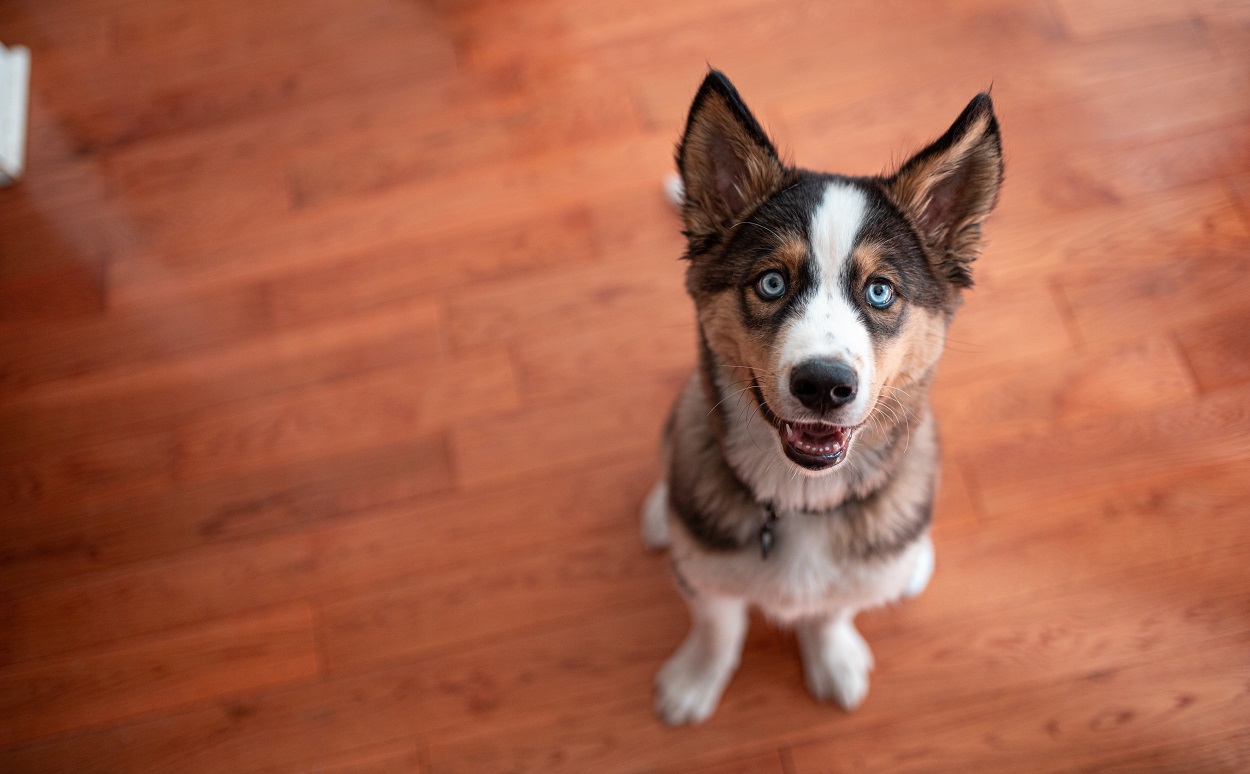
Are you looking for a dog who can accompany you when you go jogging? If so, why not think about a Husky Lab.
This mixed breed is the result of crossing Labrador retrievers with huskies.
The Husky Lab is friendly like the Labrador parent breed and goofy like the husky.
Like most husky mixed breeds, the Husky Lab has high energy levels. You’ll need to give these dogs plenty of vigorous exercise daily.
Smart dogs, the Husky Lab is highly driven by food, making this breed especially easy to train. This mixed breed husky might be suitable for an inexperienced pet parent looking for a workable challenge.
3) American Eskimo Dog x Siberian Husky (Huskimo)
Breeding two sled dogs – the American Eskimo Dog and the Siberian Husky – results in the Huskimo.
As you would expect, this crossbreed is filled with energy. Physically, the Huskimo is bulkier than a purebred husky.
This mixed Husky breed is well worth considering if you want a dedicated family dog. The stubborn and willful nature of the parent breeds means that you will need to be confident of taking control, delivering consistent training that includes lots of positive reinforcement.
The Huskimo gets along well with most other dogs.
You should avoid this mixed breed if you live somewhere with a hot climate. Their coats mean that they’ll overheat when the mercury rises.
4) Cocker Spaniel x Siberian Husky (Siberian Cocker)
Siberian cockers are the result of mixing the Siberian husky with the cocker spaniel. You’ll get a dog that is slightly smaller than a purebred husky, but still athletic, energetic, and sporty.
Siberian Cockers are very friendly around almost everyone, human or animal.
Expect lots of fun if you bring a Siberian Cocker home. they often showcase their goofy nature.
5) Jack Russell Terrier x Siberian Husky (Husky Jack)
The Husky Jack is a character-filled mixed breed that makes a great pet for an active family ready to provide plenty of exercise and outings.
It’s not only the exercise requirements of this mixed breed you’ll need to satisfy. It’s vital to give Husky Jacks lots of supervision and direction, or they can easily get themselves into trouble.
If you can supply the Husky Jack with the physical exercise and mental stimulation he cries out for, you’ll end up with a loving and loyal family pet.
As with all husky mixed breeds, you’ll need to brush the Husky Jack daily. Take care of this and consistent grooming and you should keep on top of most of the shedding, although you will not be able to eliminate hair from the equation.
6) Husky x Pitbull Terrier (Pitsky)
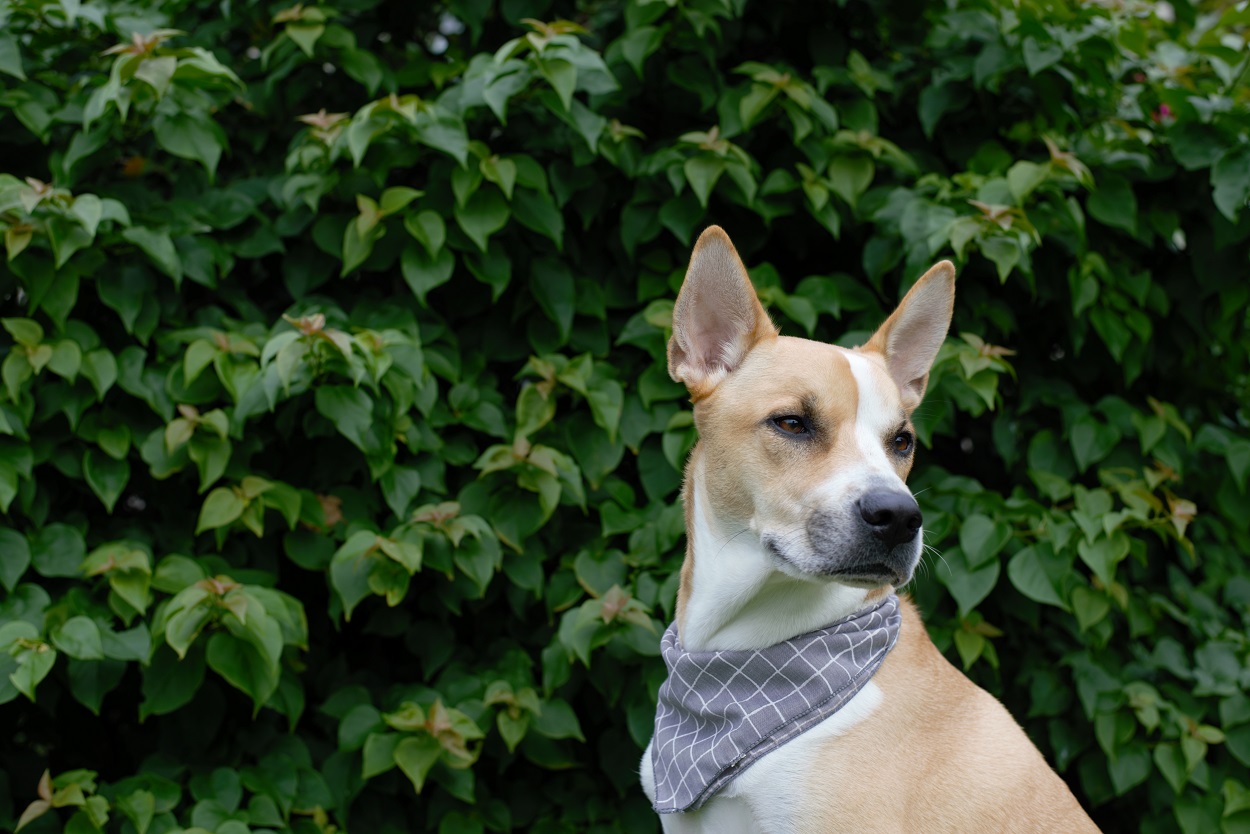
Crossing the Siberian Husky and the American Pitbull Terrier gives you the Pitsky cross.
These delightful mixed breed dogs are affectionate and playful. It is essential to give these dogs a great deal of exercise or they can become frustrated and destructive.
The stubborn nature of these pups means you could face some challenges in training.
Weighing from 30 to 70 pounds and standing from 19 to 21 inches tall. Males are typically larger than females.
Depending on which parents’ characteristics dominate, the ears of the Pitsky may be long and floppy or short and pointy. Most of these mixed breed fogs will have blue eyes due to the husky parent.
If you enjoy running or hiking, a Pitsky will make a great companion. These dogs are not especially relaxed, and they do not appreciate sitting at home doing nothing.
Some of these crossbreeds are prone to separation anxiety. This can lead to howling. If this occurs, you might consider investing in a training collar.
7) Pug x Siberian Husky (Hug)
The Hug has a cool name and a warm nature. These dogs are the result of mixing the Siberian husky and the pug.
These dogs are small enough to slot into apartment living. That said, you must still factor in some regular daily exercise to help keep the Hug satisfied.
These playful pups will ensure that you never feel lonely and that you never lack for entertainment – what are you waiting for?
8) Australian Shepherd x Siberian Husky (Aussie Siberian)
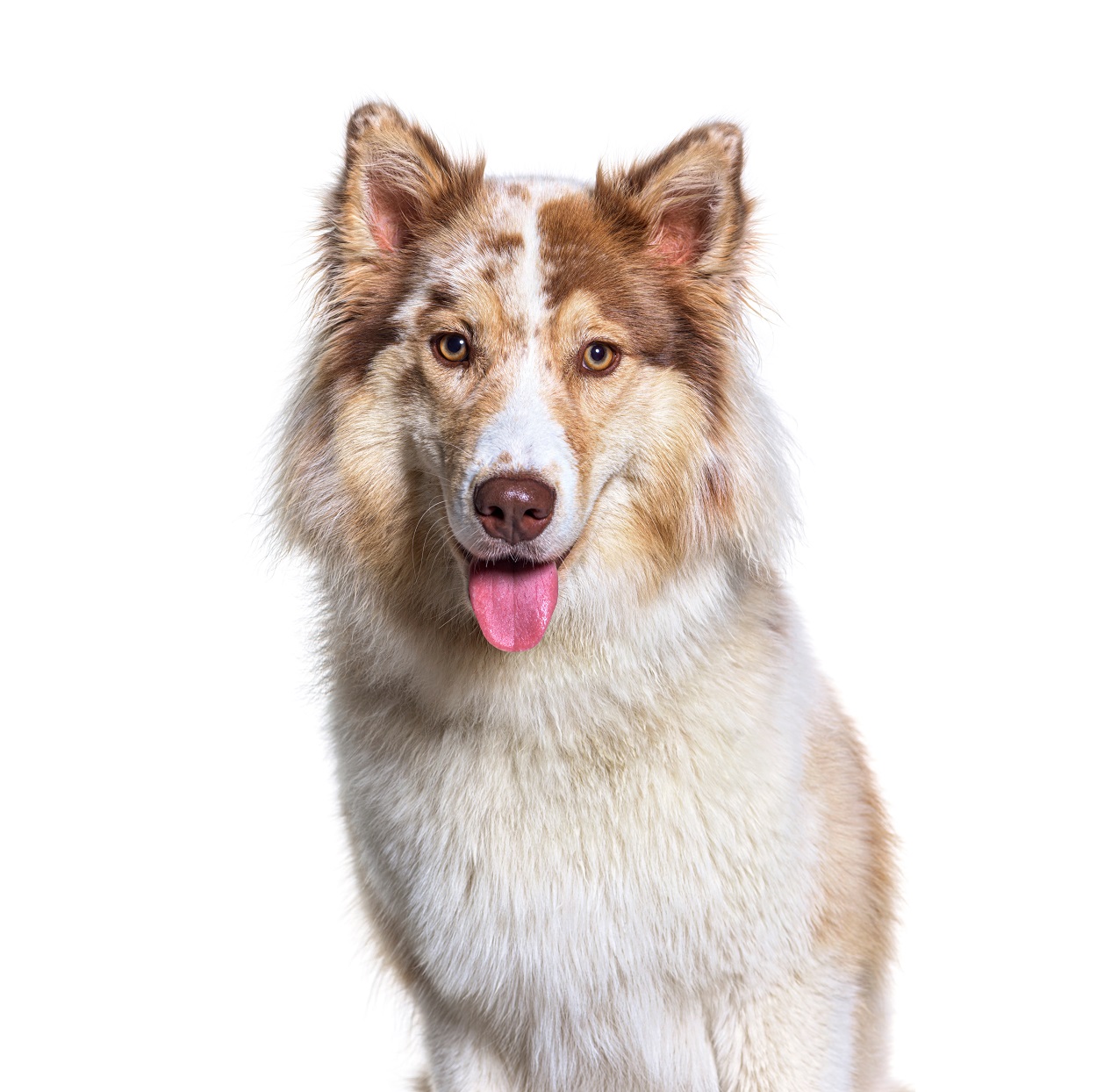
The Aussie Siberian is a high-octane hound that comes from mixing the Australian shepherd and the Siberian husky. The high energy levels of both parent breeds come together in the Aussie Siberian, a dog who simply can’t get enough exercise.
If you need a working dog, the Aussie Siberian will happily keep going all day, and then he will be ready to curl up on the couch. Be sure to shower this breed with lots of affection.
The independent streak inherent in this crossbreed means they can present a challenge when it comes to training. As such, inexperienced pet parents might consider one of the less demanding husky mixed breeds instead.
9) Golden Retriever x Siberian Husky (Goberian)
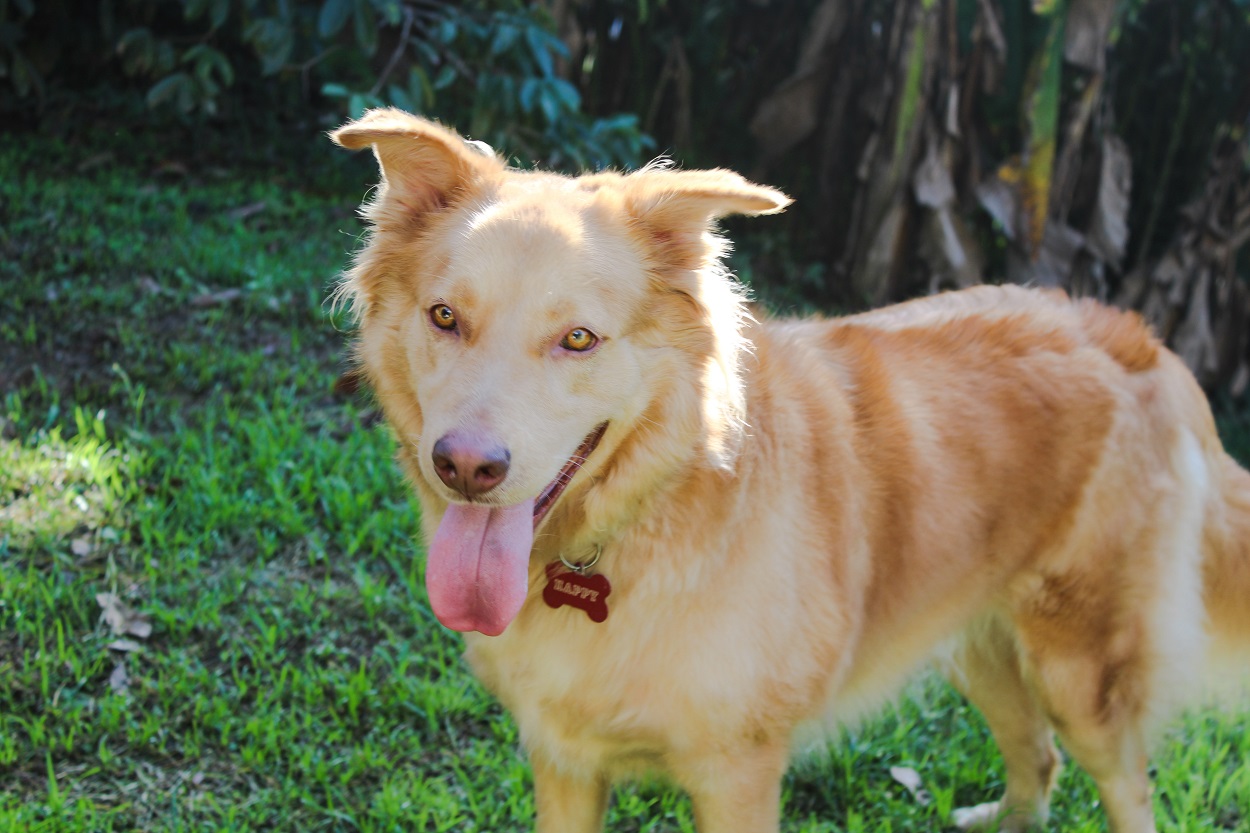
Mixing the golden retriever and the husky, two of the most popular breeds in the United States, results in the iconic Goberian.
This mixed breed dog inherits the goofy nature of the husky parent and the easy-going temperament of the retriever parent. If you’re an inexperienced or first-time pet owner, the Goberian is well worth popping on your shortlist.
The high energy levels of this mixed breed Husky mean that the Goberian is a great running, swimming, or jogging companion.
If you spend lots of time away from home, this is not the most suitable mixed breed. The Goberian demands lots of interaction and attention if he is to thrive rather than simply survive.
10) Corgi x Siberian Husky (Horgi)
Mixing the corgi and the husky gives you the Horgi, a dog with adorable eyes and a face that’s cute as a button.
While the Horgi is a beautiful dog, they have very intense prey drives. As such, avoid this mixed breed if you have small animals running around at home. If you have dogs of a similar or larger size, the Horgi should get along well with them.
Horgis tend to shed quite heavily, so make sure that nobody in your family suffers from allergies and be prepared to invest plenty of time and effort into grooming your Horgi.
11) Bulldog x Husky (Busky)
Sometimes, crossing breeds with the husky manages to dampen down some of the unwanted characteristics of the parent breeds. This occurs if you mix the husky and the bulldog.
The bulldog has a reputation of laziness and lethargy. The husky, by contrast, is filled with energy. When you mix these breeds, the Busky requires much less exercise than some husky mixed breeds. While they will still want to stretch their legs and get lots of outside action, they will be more content to spend time lazing at home than a purebred husky.
One of the principal drawbacks of this crossbreed is their tendency to drool heavily. If you like to keep things neat and tidy at home, this husky mix might not be the best choice.
12) Poodle x Siberian Husky (Siberpoo)
The Siberpoo is the result of mixing the Siberian husky and the poodle. This mixed breed has an adorable face and is always ready for action.
Although huskies are notorious for shedding copiously, the Siberpoo is classified as a hypoallergenic breed since it sheds very little. These dogs will still shed, but at a much more manageable level than most of the options above and below.
As long as you can provide the Siberpoo with some vigorous daily exercise, you’ll end up with a wonderful addition to your family.
13) Great Pyrenees x Siberian Husky (Great Huskyenees)
If you mix a Siberian husky and a Great Pyrenees, you’ll get a supersized mixed breed sure to stop strangers in their tracks.
These dogs look commanding from a distance, and they are both confident yet comical. Ideal for single dog owners or families, this striking crossbreed is not easy to find in the U.S.
If you come across a reputable breeder offering a Great Huskyenees, you should be prepared in advance for heavy-duty grooming.
This mixed breed tends to be quite independent, calling for an experienced owner capable of taking control with consistent and positive training. As long as you can provide this, why not treat yourself to a Great Huskyenees this holiday season?
14) Shar-Pei x Husky (Huskpei)
The shar-pei, informally known as the wrinkle dog, is one of the most unique dog breeds out there. Crossing this breed with the Siberian Husky results in the adorable Huskpei, but is this the right husky mixed breed for you?
You can expect a shy and reserved pup who is quite slow to make friends. They are also typically wary around strangers. As part of the family unit, though, the Huskpei is affectionate and loving.
15) Akita x Husky (Huskita)
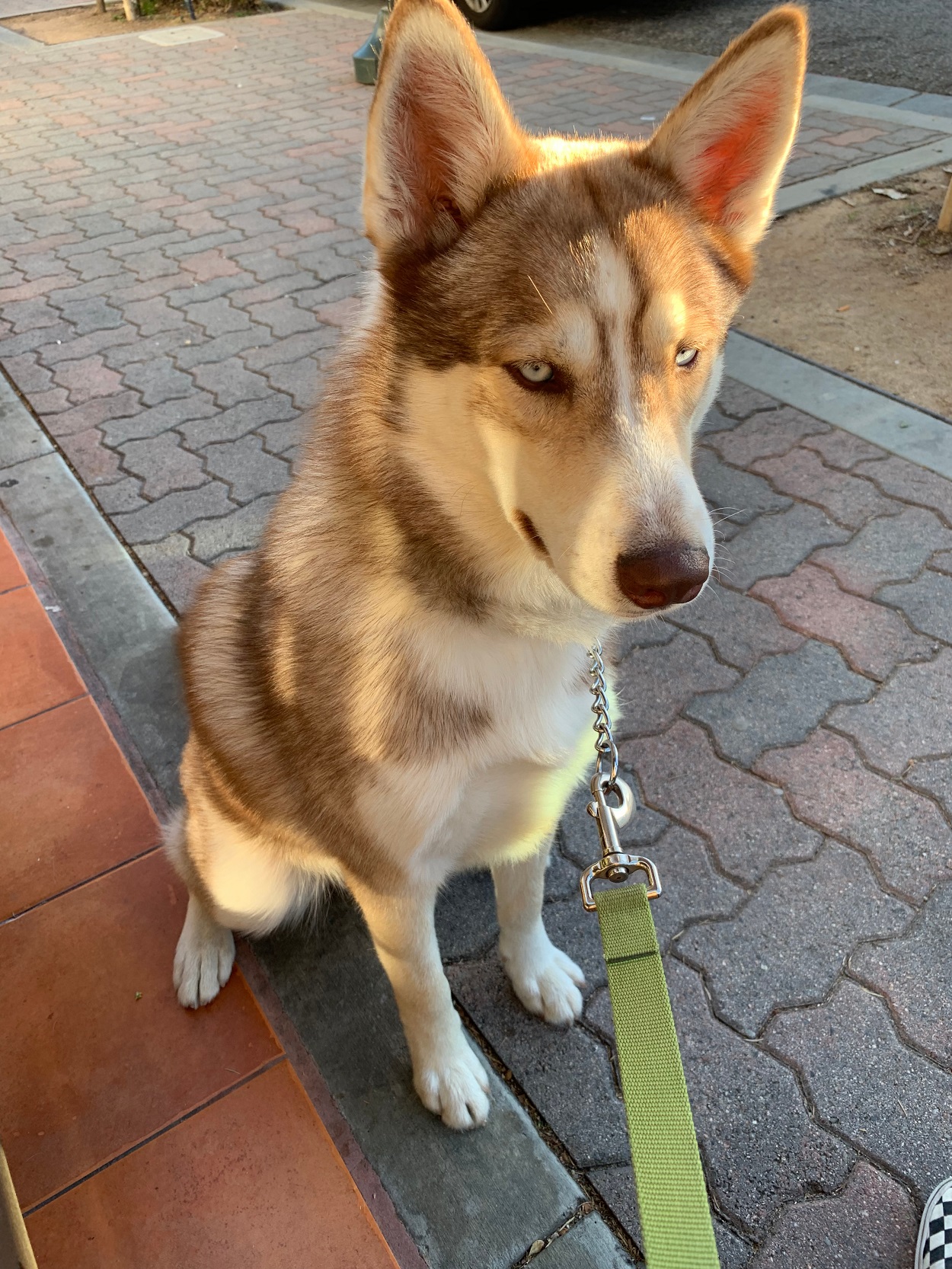
The Japanese akita is an attractive dog. When mixed with the husky, the resulting Huskita is a surprisingly lovable animal.
Quiet and independent, the Huskita is a serious dog who is also very protective of family members. They are also quite wary when confronted with strangers, so give this crossbreed lots of socialization and training with positive reinforcement from a young age.
If you already have dogs at home, you may find that a Huskita is not too friendly around them so think twice before inviting one of these crossbreeds into the family home.
16) German Shepherd x Husky (Shepherd Husky)
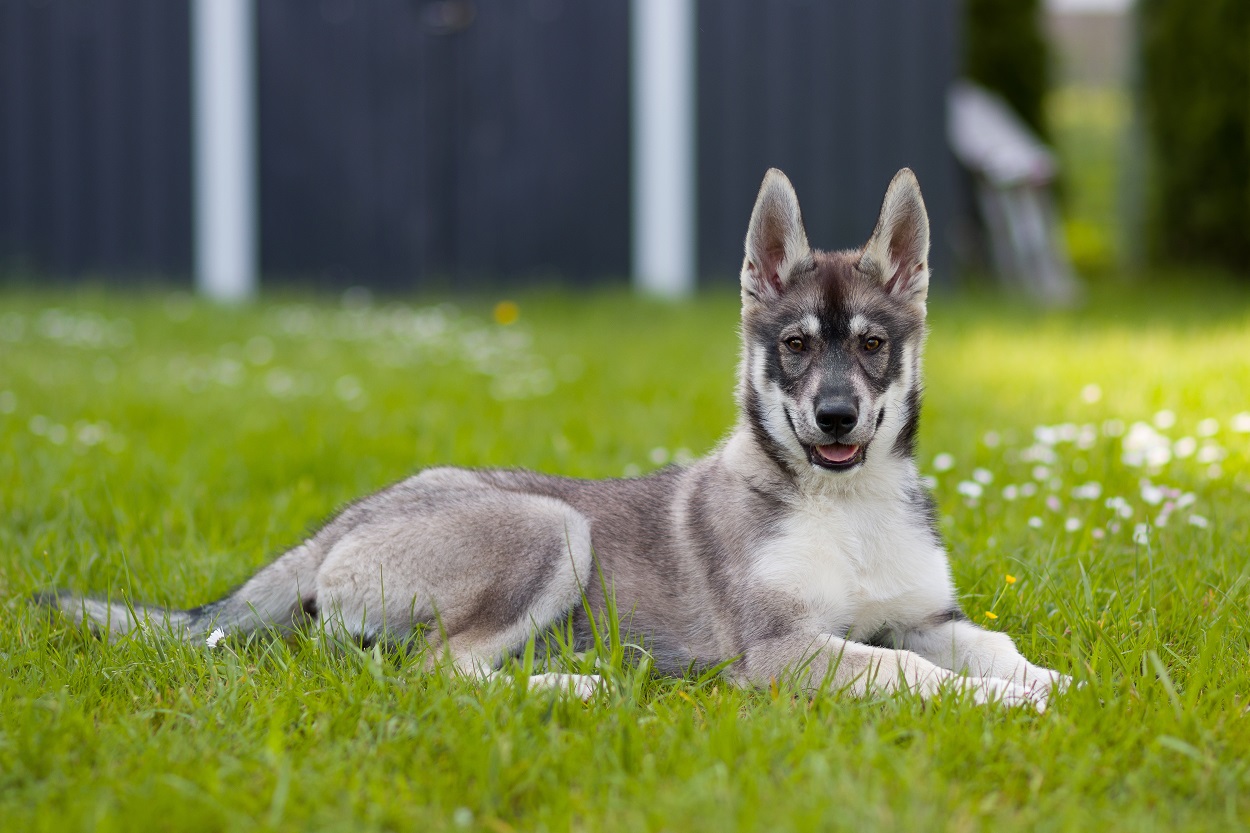
The Shepherd Husky is the majestic result of mixing the German shepherd and the husky.
You should not underestimate the amount of exercise these dogs require if you plan on bringing one home.
While these dogs are suitable as family pets, they will also thrive in a working role, assuming they feel satisfied with the task at hand. Do not consider investing in one of these husky mixed breeds unless you have a very active lifestyle and can commit to providing the Shepherd Husky with the abundance of exercise it needs.
17) Bullmastiff x Husky (Bullsky)
The Bullsky is the intimidating cross of a bullmastiff and a husky.
Despite the aggressive appearance, well-socialized bullmastiffs are usually quite friendly. These characteristics are also apparent in the Bullsky mix.
One added bonus with this mixed breed is that they tend to shed less copiously than some of the other crosses we showcase today. As long as you can commit to brushing the coat of a Bullsky daily, you should find they are not too demanding as far as mixed breed huskies are concerned.
18) Pomeranian x Husky (Pomsky)
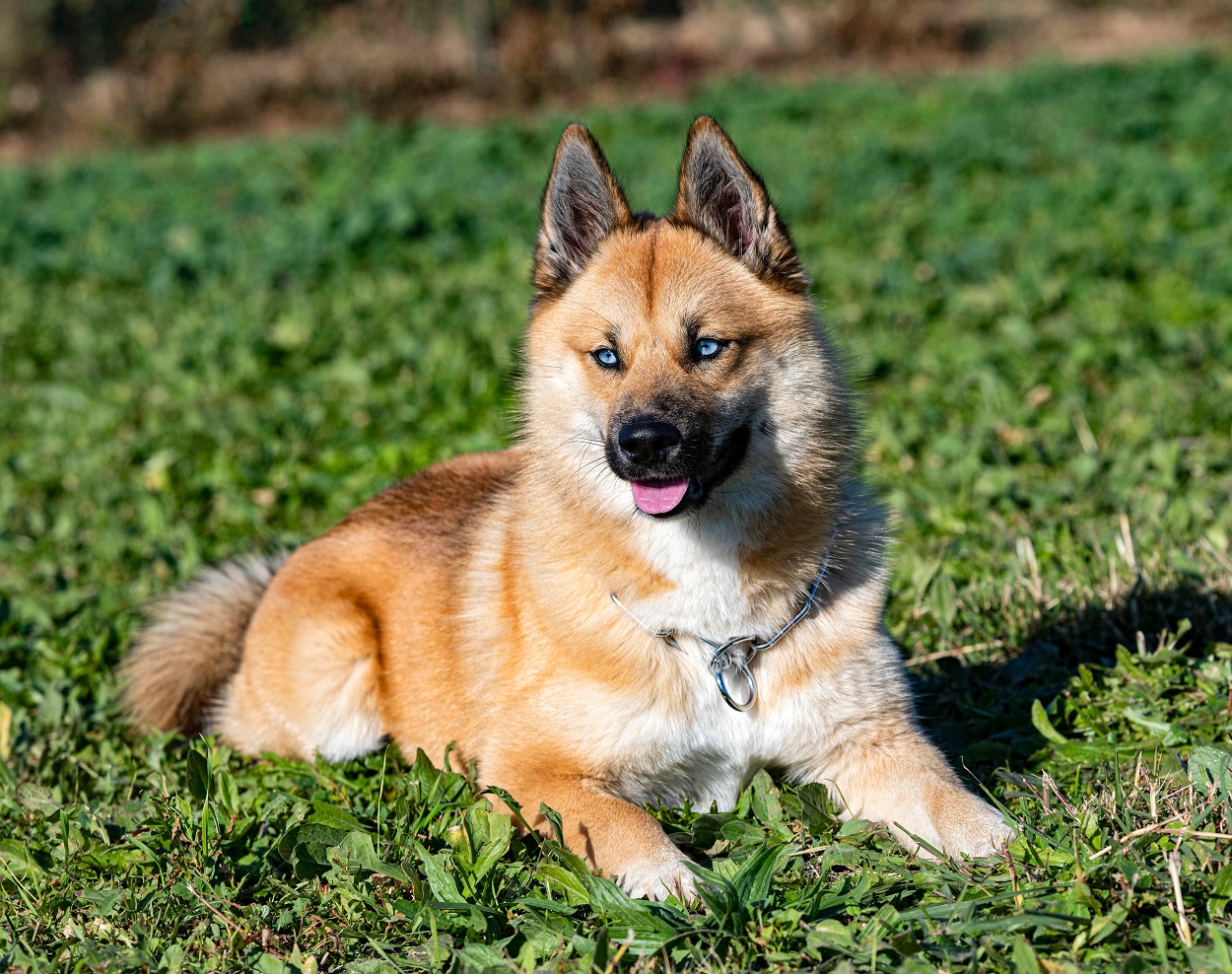
Mixing a Pomeranian and a Siberian husky gives you the Pomsky – a super-cute family pet that will get on with almost all humans and animals.
That said, many Pomskies prefer to be the only dog at home. A purebred husky, on the other hand, is usually very gregarious and makes friends easily.
Bear in mind that the Pomsky can be quite strong-willed on occasion. It is imperative to establish clear and firm guidelines to avoid this mixed breed taking advantage. Get started with training from a young age to prevent problems developing later.
19) Rottweiler x Husky (Rottsky)
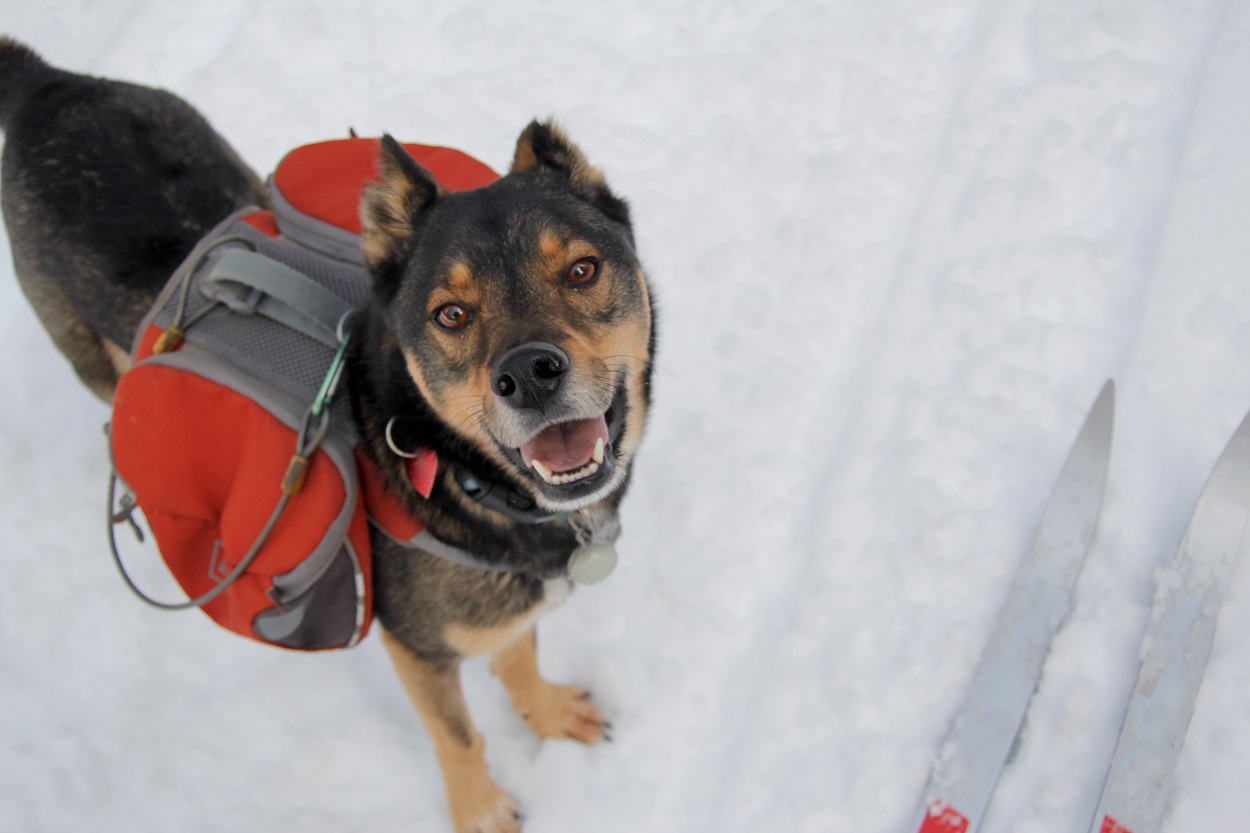
The Rottsky is a combination of the happy but hilarious husky and the Rottweiler, a dog that is all about business.
Although the Rottweiler parent breed is standoffish and serious around strangers, this breed is remarkably sweet around their loved ones. These characteristics come to the fore in the Rottsky, a mixed breed that could be described as a gentle giant always on the hunt for some affection.
Mixing these two breeds helps to counterbalance some of the challenges inherent in the parent breeds. Rotties are super-smart dogs, and they are much easier to train than huskies. The Rottsky is a very trainable mixed breed. Huskies are also quicker to make friends than Rottweilers, so you’ll find that the Rottsky is less aloof than the parent breed.
20) Chow Chow x Husky (Husk Husk)
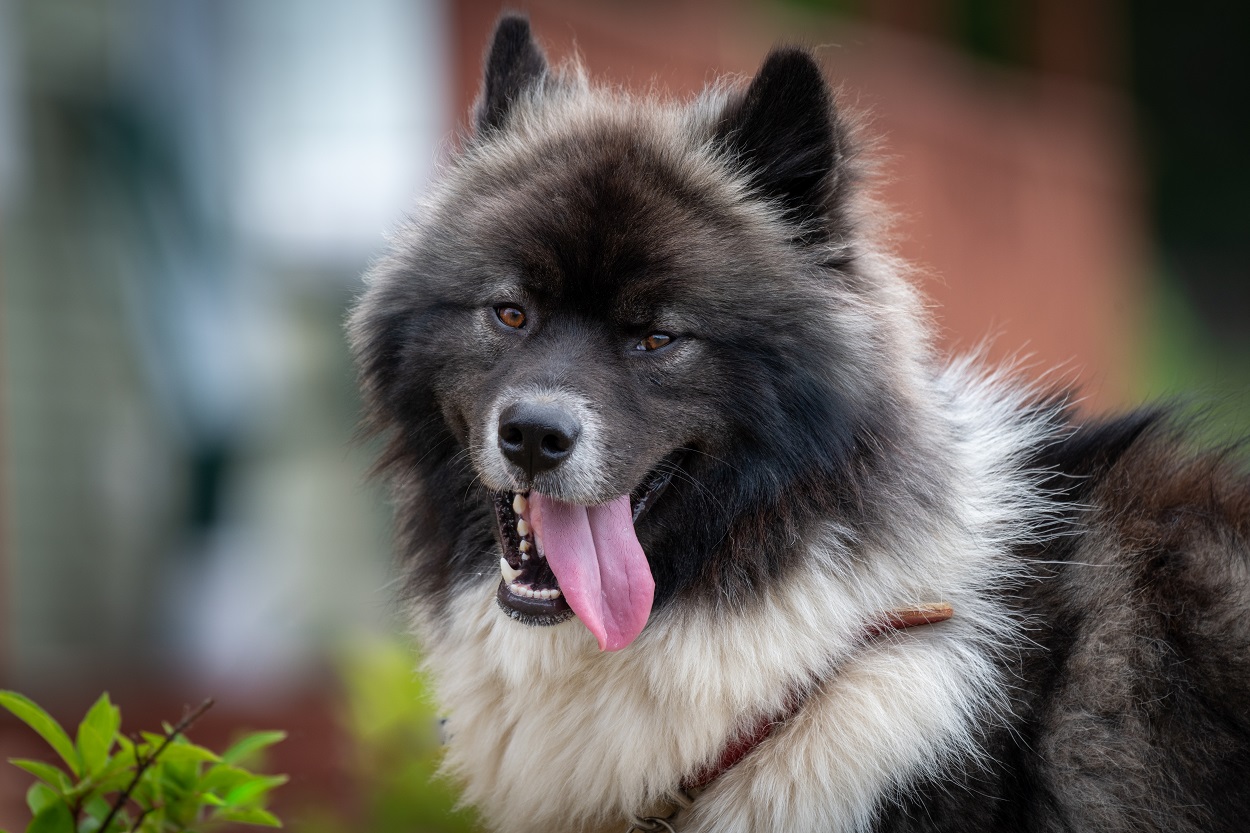
For some people, the husky is just not furry enough! If you are one of those people, the Husk Husk may be just what you’ve been looking for.
Resembling a bear, Husk Husks are nevertheless very attractive dogs that get plenty of attention from strangers. If strangers approach this mixed breed, they may become wary and edgy. Combat this by training and socializing this crossbreed for an early age.
Like most husky mixed breeds, these dogs will shed heavily. As well as brushing the Husk Husk daily and taking care of regular grooming, you should also invest in a good vacuum designed to cope with dog hair.
21) Basset Hound x Siberian Husky (Hussetsky)
Breeding a basset hound with a husky results in the Hussetsky, an adorable mix suitable for less experienced pet parents.
Some husky crossbreeds result in dogs with extremely high energy levels. The Hussetsky, by contrast, inherits the lazy characteristics of the basset hound, a breed well-known for taking plenty of naps.
Overall, this mellow mixed breed is one of the most family-friendly on our shortlist and won’t require vigorous or relentless exercise.
22) Border Collie x Husky (Bordsky)
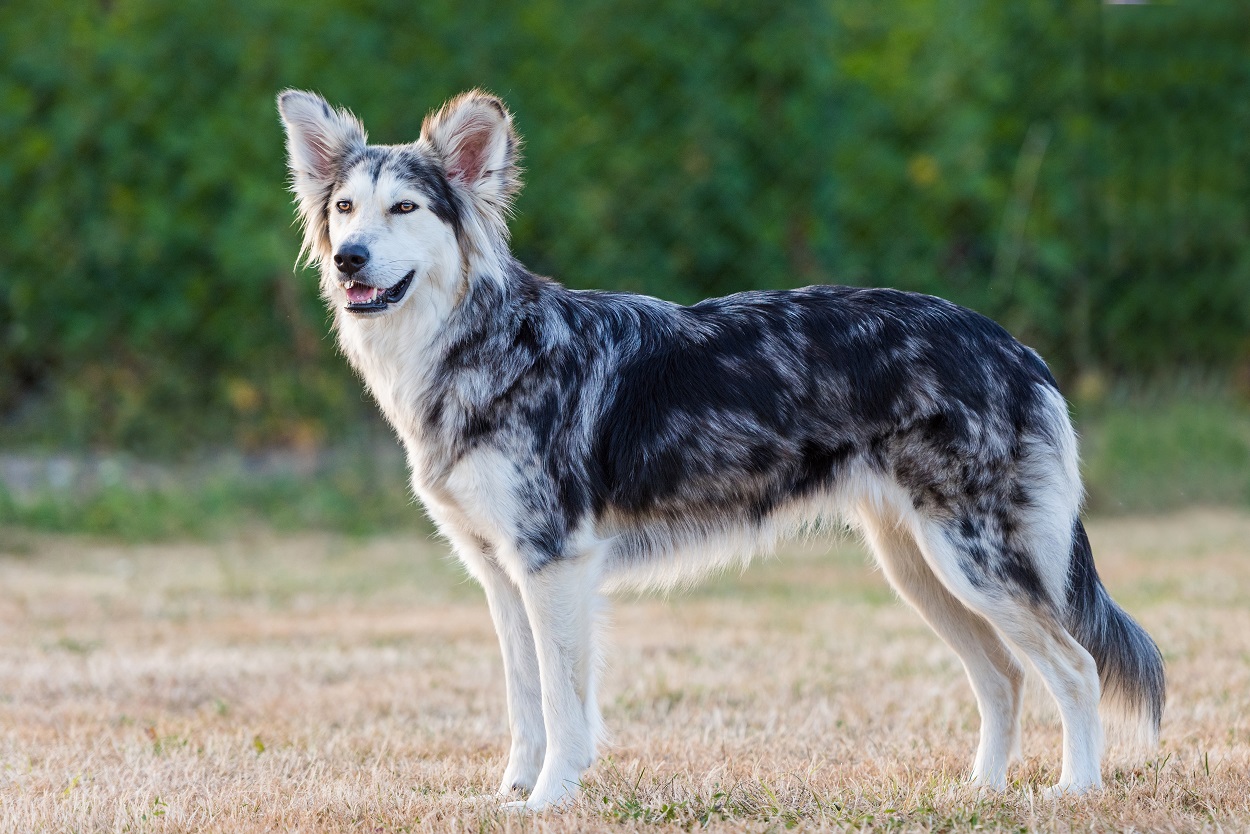
Crossing the husky with the border collie generates the Bordsky, a dog that has super-high energy levels and a lovable disposition.
If you like running, biking, or jogging, a Bordsky will keep going by your side all day long. Those with more sedentary lifestyles should avoid bringing one of these dogs home or everyone will end up unhappy.
Since the border collie is widely recognized as one of the smartest canine breeds, you can expect a Bordsky to require lots of mental enrichment and stimulation. If you don’t meet these needs, this mixed breed might exhibit destructive tendencies.
23) Alaskan Malamute x Husky (Alusky)
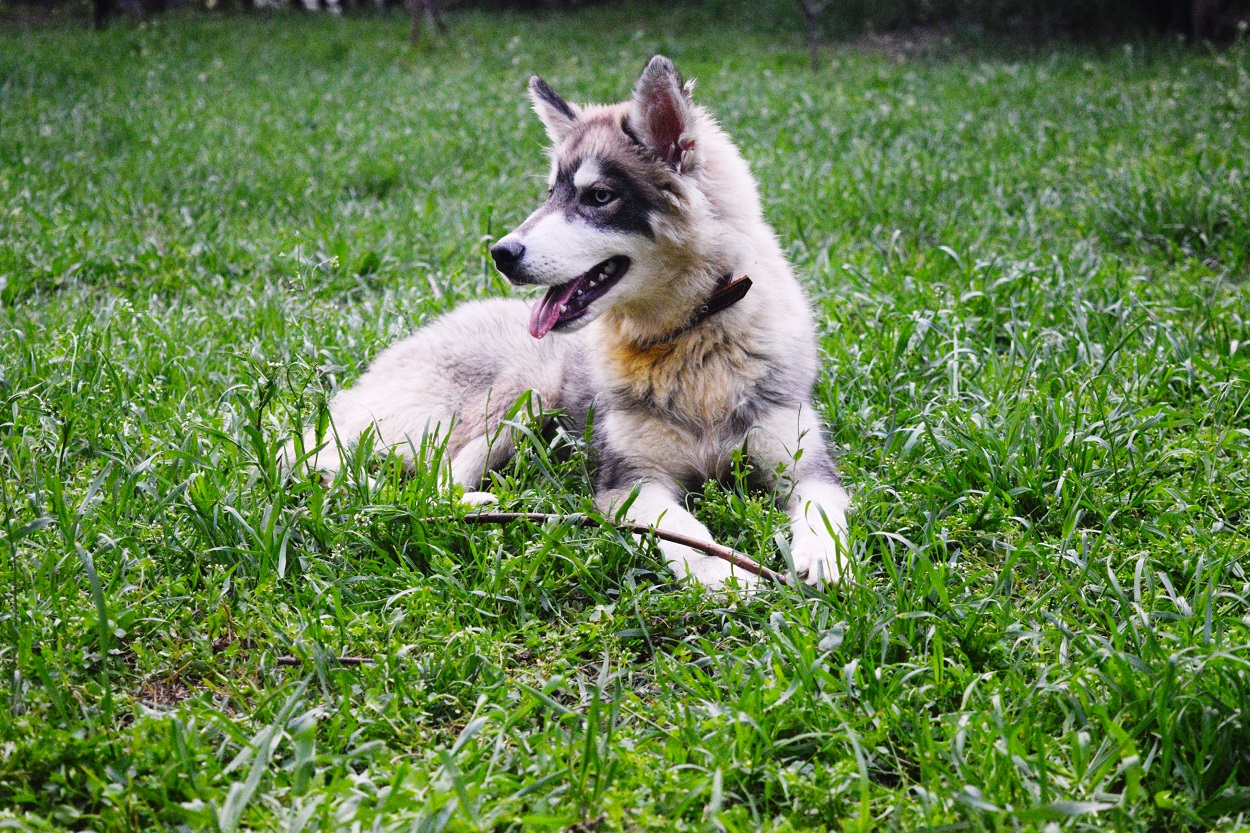
The husky and the Alaskan malamute are similar breeds. Crossing these dogs results in the Alusky, an endearing and lovable dog.
Both parent breeds have high energy levels and prefer colder climates. You should train this crossbreed from a young age and socialize them properly. This may be challenging, depending on which of the parents’ genetics dominate.
Unless you can commit to giving an Alusky lots of intense exercise, playtime, and mental stimulation, you should consider a breed that better suits your lifestyle.
24) Catahoula Leopard Dog x Husky (Catahuskla Leopy)
Some husky mixed breed combos create dogs with incredibly high energy levels and the Catahuskla Leopy is one of these.
This crossbreed comes from mixing the Catahoula leopard dog, also known as the brindle Catahoula dog, with the husky. These dogs are always ready to go and never seem to run out of energy.
Before deciding to bring a Catahuskla Leopy home, you should be confident that you can provide them with firm but fair leadership. You should also be committed to providing this crossbreed with the abundance of exercise it needs. If you can tick all these boxes, this mixed breed husky could make a great family pet, livening up your outdoor excursions.
25) Boxer x Husky (Boxsky)
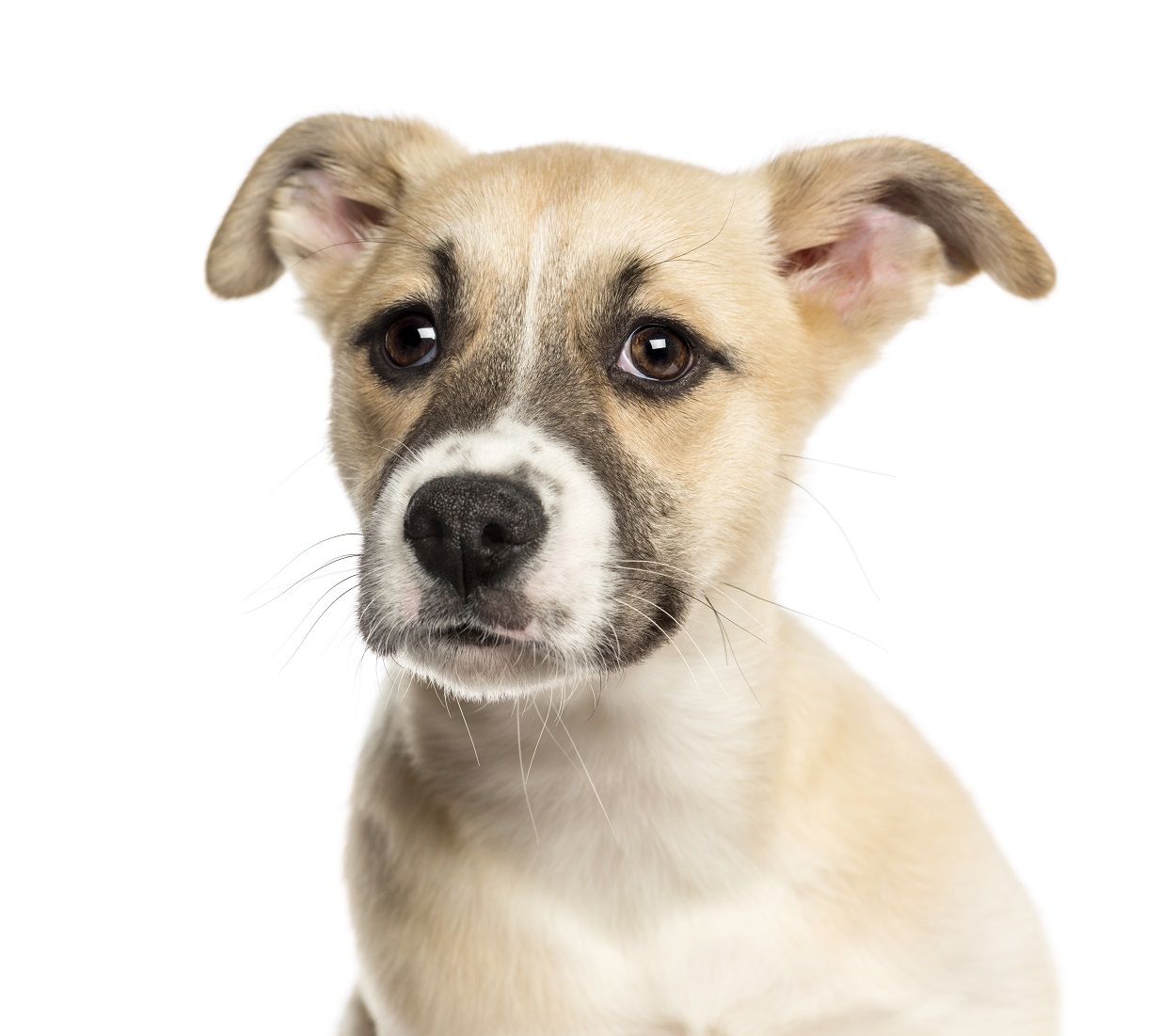
Crossing a boxer with a husky gives you the Boxsky, a family dog with the temperament of a lap dog.
If you bring one of these hounds home, you may find you end up with a permanent puppy in the house. Exuberant, goofy, and extremely gentle, the Boxsky makes a great playmate for a young kid.
Conclusion
We very much hope that today’s guide to the best husky mixed breeds has given you plenty of inspiration if you’re looking to bring a new furball home this year.
You should never buy a dog primarily for the way it looks. Pay close attention to the characteristics of the husky breed, as well as the traits of the cross breeds we showcase today. Ensure that you can give a dog the exercise and mental stimulation they need to thrive before bringing that breed home.
Before you go today, take a moment to bookmark GO Boxer Rescue. We have a busy content schedule for the forthcoming holiday season, so pop back soon and don’t miss out.
